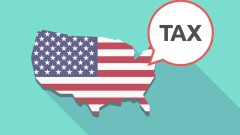Sometimes, to look forward, you have to start by looking back.
The issues that are most likely to impact the world of state and local tax during the year ahead are naturally reflective of past developments. Each year, Jamie Yesnowitz, leader of the SALT team in the Washington National Tax Office of Top 10 Firm Grant Thornton, focuses on the issues they believe will be of primary interest to policymakers, courts, and taxpayers in the coming year.
Last year's major developments include:
- New Jersey and Minnesota enacted major tax reform;
- States reacted to "new" IRC Section 174;
- Maryland's digital advertising tax remained in effect, with litigation continuing;
- The trend of adopting elective pass-through entity taxes continued;
- Apportionment litigation proliferated;
- The state budget dichotomy caused tax rate fluctuations;
- States expanded their indirect tax bases to nontraditional transactions;
- State consideration of Multistate Tax Commission statement on P.L. .86-272;
- The Washington Supreme Court holding individual capital gains tax; and,
- The Colorado Supreme Court considering property revaluation due to the pandemic.
With all that in mind, here are 10 predictions for 2024 from Yesnowitz and his team:













